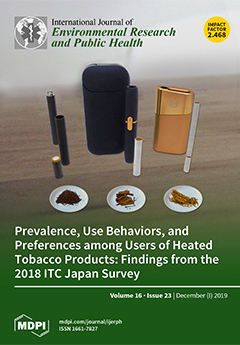Background: This study aimed to test the validity of three different submaximal tests (i.e., 3-min step test with 20.3-cm step box height (3MST
20), 3-min step test with 30-cm step box height (3MST
30), and 6-min walk test (6MWT)) in
[...] Read more.
Background: This study aimed to test the validity of three different submaximal tests (i.e., 3-min step test with 20.3-cm step box height (3MST
20), 3-min step test with 30-cm step box height (3MST
30), and 6-min walk test (6MWT)) in estimating maximal oxygen consumption (VO
2max) in young and healthy individuals.
Methods: The 3MST
20, 3MST
30, 6MWT, as well as the cardiopulmonary exercise test (CPET) were performed in 73 participants (37 men and 36 women; mean age: 30.8 ± 9.3 years). All participants visited the clinic three times in a random order for anthropometric measurements, three submaximal tests, and the VO
2max test. Multiple linear regression analyses were conducted to construct the VO
2max prediction equations for each submaximal test.
Results: The prediction equations developed based on multiple regression analyses for each submaximal tests were as follows: 3MST
20: VO
2max = 86.0 − 10.9 × sex (male = 1, female = 2) − 0.4 × age − 0.1 × weight − 0.1 × heart rate recovery at 30 s (HRR30s); 3MST
30: VO
2max = 84.5 − 10.2 × sex (male = 1, female = 2) − 0.4 × age − 0.1 × weight − 0.1 × HRR30s; and 6MWT: VO
2max = 61.1 − 11.1 × sex (male = 1, female = 2) − 0.4 × age − 0.2 × weight − 0.2 × (distance walked·10
−1). The estimated VO
2max values based on formulated equations were 37.0 ± 7.9, 37.3 ± 7.6, and 36.9 ± 7.9 mL∙kg
−1∙min
−1 derived from the 3MST
20, 3MST
30, and 6MWT, respectively. These estimated VO
2max values were not significantly different from the measured VO
2max value, 37.3 mL∙kg
−1∙min
−1. The estimated VO
2max based on the 3MST
20, 3MST
30, and 6MWT results explained 73.4%, 72.2%, and 74.4% of the variances in the measured VO
2max (
p < 0.001), respectively.
Conclusions: The 3MST
20, 3MST
30, and 6MWT were valid in estimating VO
2max in relatively young and healthy Asian individuals.
Full article





